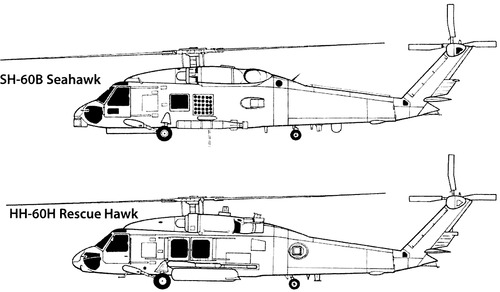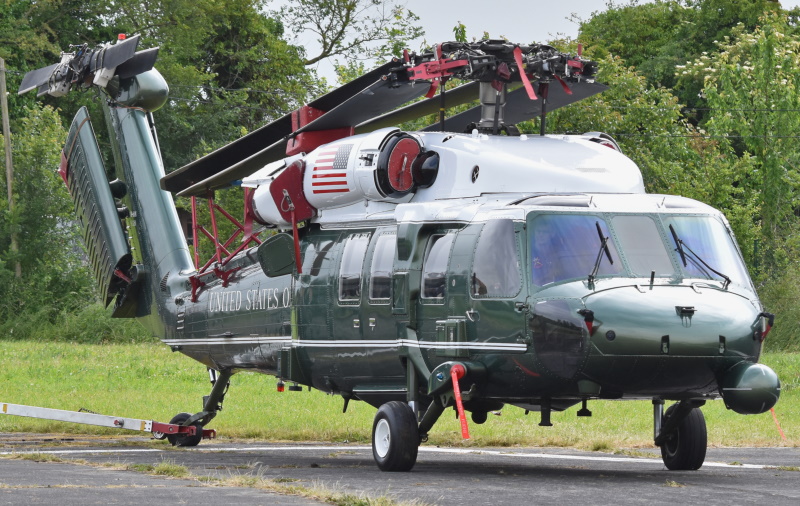The Sikorsky S 70 Helicopter: A Deep Dive into Its Layout and Performance
The Sikorsky S 70 Helicopter: A Deep Dive into Its Layout and Performance
Blog Article
High-Performance Multi-Role Rotorcraft Featuring Advanced Cabin Technologies and Integrated Sensor Systems
The world of rotorcraft technology has seen remarkable improvements in current times, particularly in the realm of high-performance multi-role rotorcraft furnished with sophisticated cockpit innovations and perfectly incorporated sensing unit systems. These advancements have not only boosted the functional capabilities of rotorcraft yet have actually likewise significantly affected contemporary aeronautics operations on numerous fronts. From enhanced goal versatility to improved operational performance, the merging of sophisticated cabin technologies and incorporated sensor systems has actually introduced a new period of possibilities for rotorcraft applications. In the adhering to discussion, we will check out the evolution of rotorcraft innovation, explore the world of sophisticated cabin technologies, and examine the effects of incorporated sensor systems on the functional versatility and performance of modern-day rotorcraft.
Development of Rotorcraft Innovation
The advancement of rotorcraft innovation has actually been marked by significant developments in aerodynamics, materials, and propulsion systems, shaping the capacities and performance of modern rotorcraft. Furthermore, advancements in propulsion systems, consisting of more powerful engines and cutting-edge propulsion technologies, have enabled rotorcraft to achieve greater elevations, faster speeds, and greater payloads.
These advancements have not just transformed the capacities of rotorcraft yet have likewise broadened their applications across different markets, including armed forces, industrial, and emergency situation solutions. The continuous evolution of rotorcraft technology continues to drive innovation in the field, pushing the borders of what is feasible and shaping the future of vertical flight.
Advanced Cockpit Innovations
Structure upon the foundational developments in the rules of aerodynamics, materials, and propulsion systems, the world of rotorcraft modern technology now shifts emphasis towards pioneering Advanced Cockpit Innovations. The combination of cutting-edge modern technologies within the cockpit environment plays a vital function in boosting the operational capacities, security, and effectiveness of modern rotorcraft. sikorsky s 70. Advanced Cabin Innovations encompass a large range of functions made to offer pilots with enhanced situational recognition, structured data management, and instinctive control interfaces
Among the vital advancements in cabin design is the execution of glass cabins, which change typical analog determines with high-resolution screens. These electronic systems supply customizable formats, real-time data assimilation, and enhanced readability, making it possible for pilots to access important information at a glance. Advanced avionics systems, such as fly-by-wire controls and augmented reality screens, are transforming just how pilots engage with the airplane, allowing for precise control and improved decision-making abilities.


Integrating innovative cockpit technologies not just boosts pilot performance however likewise adds to overall mission effectiveness and safety in intricate operational atmospheres. By leveraging modern innovations within the cabin, rotorcraft suppliers are establishing brand-new standards for functional quality and mission success.
Integrated Sensor Solutions
With the advancement of rotorcraft innovation, the combination of sophisticated Integrated Sensor Equipment has actually ended up being extremely important in enhancing operational effectiveness and safety and security. These Integrated Sensing unit Equipments incorporate a wide range of technologies that supply critical data for different functions such as navigation, monitoring, targeting, and ecological surveillance. By seamlessly incorporating sensors like radars, electronic cameras, lidar, and infrared systems into rotorcraft, drivers can profit from enhanced situational understanding, enhanced objective capacities, and lowered pilot workload.
One key advantage of Integrated Sensor Solutions is their ability to gather real-time data and give actionable insights to pilots and mission operators. As an example, advanced radar systems can detect blog here and track targets over cross countries, enabling early risk detection and efficient action preparation. In addition, incorporating electro-optical and infrared video cameras enables rotorcraft to conduct reconnaissance and surveillance objectives with accuracy and accuracy.
Basically, the integration of sophisticated sensing unit modern technologies right into rotorcraft not just enhances operational efficiency however also adds considerably to total objective success and team safety and security. As rotorcraft remain to evolve, the role of Integrated Sensor Equipment will unquestionably remain at the forefront of development in the aerospace industry.
Functional Versatility and Performance
Enhancing operational versatility and performance in rotorcraft is a natural development from the assimilation of innovative Integrated Sensor Solutions. By leveraging the insights and information offered by these innovative sensing unit systems, rotorcraft can maximize their performance throughout numerous missions and settings.
Functional adaptability includes the ability of rotorcraft to adjust to various roles and scenarios effectively. With advanced cabin technologies and integrated sensor systems, rotorcraft can perfectly change in between jobs such as search and rescue, clinical emptying, security, and much more. This convenience improves the rotorcraft's capability to meet diverse operational requirements without calling for Website considerable reconfiguration.
Effectiveness in rotorcraft procedures is crucial for optimizing objective performance and resource application. Integrated sensor systems play a critical duty in improving functional effectiveness by giving real-time data on climate problems, terrain mapping, target monitoring, and more. This information makes it possible for pilots to make educated decisions promptly, enhance trip paths, preserve gas, and enhance general mission performance.
Influence on Modern Aeronautics Operations

In addition, the combination of innovative sensors promotes enhanced objective planning and execution, enabling rotorcraft to carry out a variety of tasks with enhanced accuracy. From search and rescue procedures to airborne firefighting and regulation enforcement objectives, the capabilities of contemporary rotorcraft outfitted with innovative cabin modern technologies and integrated sensor systems are exceptional.
Additionally, the impact of these improvements extends past functional performance to cost-effectiveness and sustainability. By enhancing trip routes, fuel consumption, and maintenance timetables, high-performance rotorcraft furnished with innovative cockpit modern technologies and sensing units add to lowering functional costs and ecological impact, making them indispensable assets in modern-day aeronautics operations.
Verdict
Finally, the high-performance multi-role rotorcraft with sophisticated cabin innovations and integrated sensor systems represents a substantial development in aviation technology. These developments enhance operational convenience and go to these guys performance, eventually impacting modern aviation procedures in a positive means. The assimilation of these advanced technologies enables enhanced capacities and efficiency in numerous objective circumstances, showcasing the continued development of rotorcraft technology in the aeronautics sector.
The world of rotorcraft innovation has actually seen remarkable developments in current times, especially in the realm of high-performance multi-role rotorcraft furnished with cutting-edge cabin innovations and flawlessly incorporated sensing unit systems. From enhanced goal flexibility to boosted functional effectiveness, the convergence of innovative cabin modern technologies and integrated sensor systems has actually ushered in a brand-new age of opportunities for rotorcraft applications. In the adhering to conversation, we will certainly explore the development of rotorcraft modern technology, delve into the world of sophisticated cockpit technologies, and take a look at the ramifications of integrated sensing unit systems on the functional flexibility and performance of contemporary rotorcraft.

Report this page